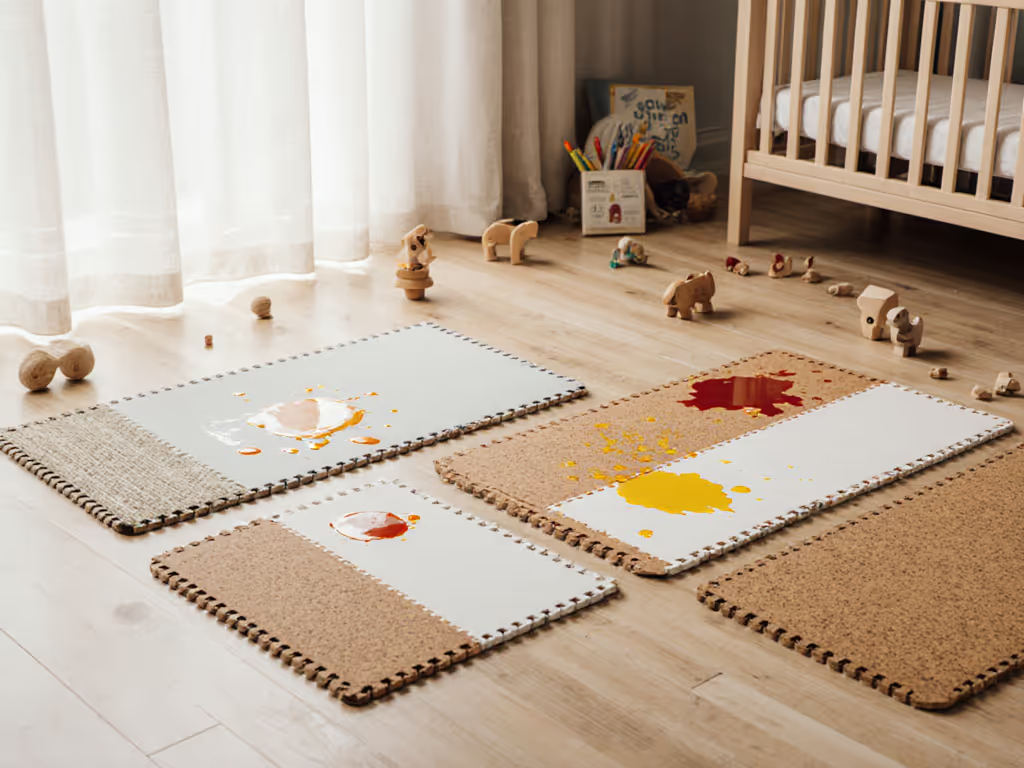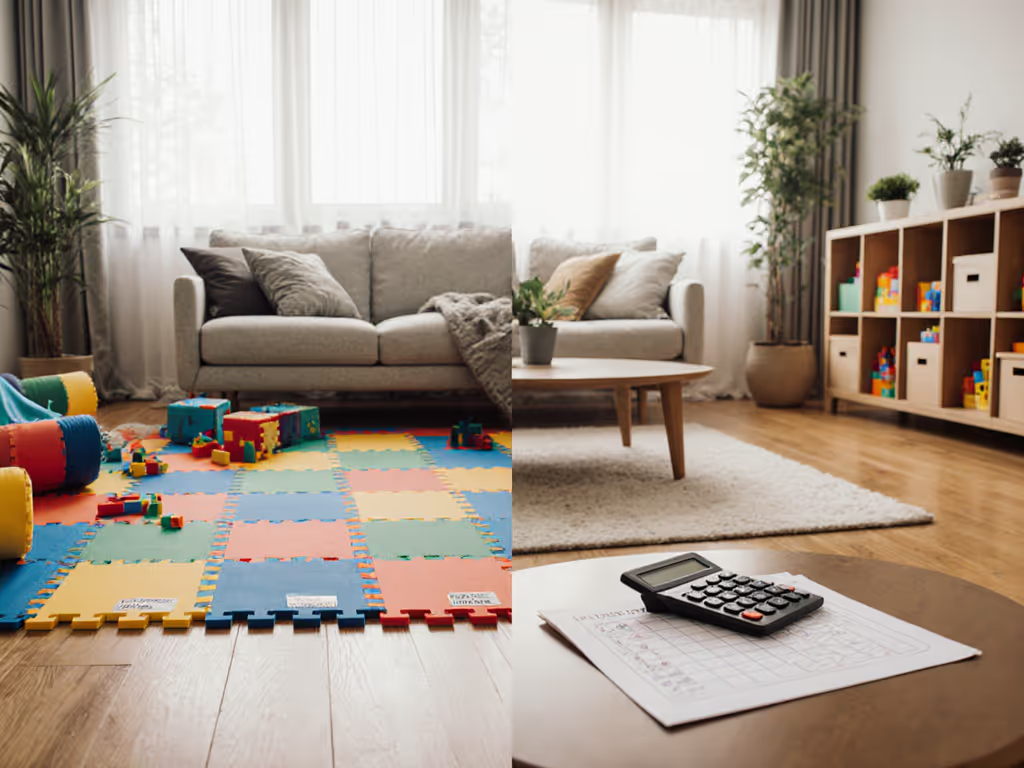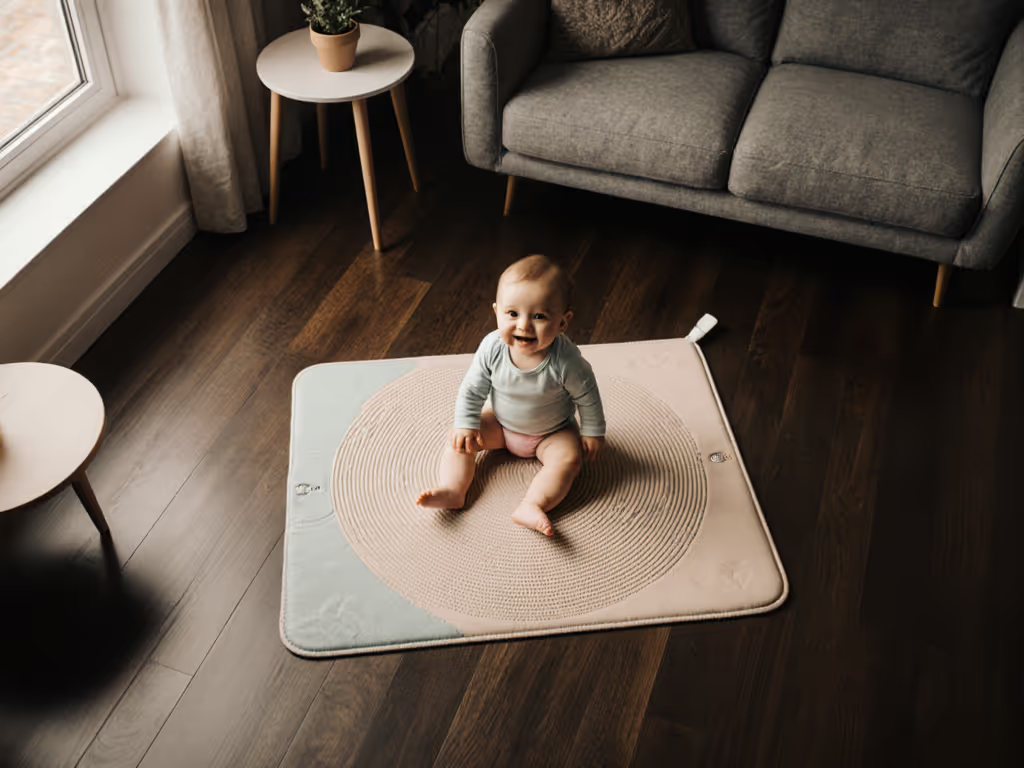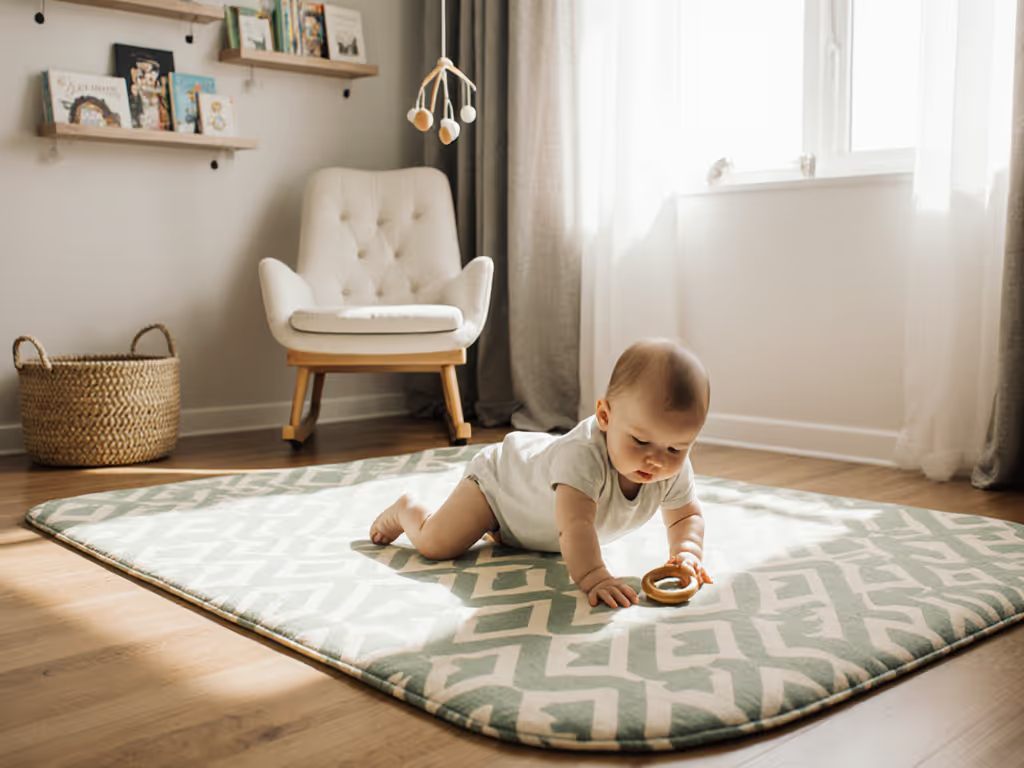
Temporary Play Mat Solution: Rent vs Buy Cost Guide

As a parent mapping square footage to developmental stages, I've fielded dozens of "baby play mat rental comparison" queries this year, especially around play mat subscription services. Both options promise relief from the "what if we only need it for three months?" panic. But when you're reconciling floor space ROI against toddler-induced wear, price-per-month math cuts through the noise. Let's dissect temporary play mat solutions using the same conservative, scenario-based framework I use to budget my own living room.
Why the Confusion? Short-Term Needs, Long-Term Costs
Urban parents face a perfect storm: limited square footage, hardwood floors prone to scratches, and a baby whose tummy-time window closes before you've finished assembling the mat. Yet most guides focus only on sticker price, ignoring the hidden costs of storage, replacement, or resale friction. Remember my three cheap mats? Corners curled, foam cracked, storage became clutter. A simple spreadsheet changed everything. Tracking warranty coverage, usage duration, and resale value revealed one durable mat cost less per month than juggling disposables, even after reselling it post-toddler phase.
This isn't about luxury; it's about space economics. Every square foot in a 700-sq-ft apartment must earn its keep. A mat that folds flat or modularizes for playdates delivers value a rental can't replicate long-term. But for short trips or uncertain needs? Rentals shine. Let's quantify both. For footprint planning, see our play mat size guide for small spaces.
Cost Breakdown: Rental vs. Purchase (The Price-Per-Month Lens)
Short-Term Play Mat Rental: When It Mathematically Makes Sense
Rental services like BabyQuip or Cloud of Goods offer $2-$7/day for basic mats. At $5/day, a 14-day trip costs $70. Superficially, that's less than buying a $100 mat. But consider:
- Delivery/pickup fees often add 20-30% (e.g., $25 for Queens delivery via Cloud of Goods)
- No customization: you get what's available, not what fits your hardwood floor or neutral decor
- Zero residual value: that $70 evaporates post-vacation
Price-per-month beats sticker price for real-world value, but only if you calculate total usage time. Renting for under 30 days? Often cost-effective. Beyond 6 weeks? Likely pricier than buying.
Rentals excel for:
- < 3-week trips (price-per-month stays low)
- Testing materials (e.g., "Will my baby accept EVA foam?")
- Guest overflow (when grandparents visit with a toddler)
Buying: Amortizing Costs for True Lifecycle Value
That $100 mat bought new seems steep until you spread costs over time. At 18 months of use (tummy time through early toddler play):
- $100 ÷ 18 months = $5.55/month
- Add resale value (e.g., 40% via Facebook groups) = $3.33/month
But durability dictates real cost. A flimsy mat replaced at 6 months? $16.67/month. Seek:
- Warranties ≥ 1 year (covers peeling, edge curl)
- Modular designs (add tiles as baby grows)
- Certified materials (OEKO-TEX®, Greenguard Gold)

Lark Baby Vegan Leather High Chair Mat
The Lark Baby Goods vegan leather mat (40x40") exemplifies lifecycle thinking: at $40, it serves as high-chair pad, tummy-time zone, and craft station. Folded to 10x10x1", it stores under sofas, which is critical in tight spaces. With 4.7★ reviews citing 2+ years of daily use, its price-per-month drops to $1.50-$2.00 when resold. Compare that to renting a basic mat at $5/day for 60 days: $300+ with fees.
Critical Decision Factors Beyond Price
1. Floor Type & Safety (Non-Negotiables)
- Hardwood/laminate: Rentals rarely provide tested non-slip backing. At home, prioritize mats with flocked suede (like Lark's) or rubberized grips. One slip during pull-ups risks falls. For floor-specific traction and safety tips, read our hardwood and carpet compatibility guide.
- Carpet: Rentals may bunch; avoid thin foam. Thicker, interlocking tiles (TPU/EVA) resist shifting but trap crumbs.
2. Materials & Cleanability (Where Rentals Fall Short)
Rentals use generic, often PVC-heavy mats. Get material-by-material insights in our baby play mat materials safety guide. For chemical safety:
- Avoid rentals making vague "non-toxic" claims without specific certifications (Prop 65 compliance isn't enough)
- Demand transparency when buying: OEKO-TEX® Standard 100 or Greenguard Gold reports
- Cleanability test: Rentals rarely handle puree stains; look for fully wipeable surfaces (like Lark's vegan leather) that repel odors
3. Space & Storage (The Urban Parent's Litmus Test)
Rental mats are bulky. One rental cycle taught me: a 6'x4' mat in a studio apartment is clutter. Compare foldable vs roll-up mats to minimize storage stress. Prioritize:
- Foldable mats (≤ 12" when stored)
- Modular systems (store only used sections)
- Weight < 5 lbs for daily moving
When to Rent vs. Buy: Your Decision Cheat Sheet
| Scenario | Recommendation | Why? |
|---|---|---|
| Weekend trip | Rent | $25 rental beats $100+ purchase just for 3 days |
| 3-month apartment stay | Buy | $100 mat ÷ 3 mo = $33/mo; resell for ~$50 → $16.50/mo |
| Hardwood floors + safety fears | Buy | Rentals skip floor-specific testing; dedicated non-slip backs prevent falls |
| Testing baby's mat preference | Rent | Low-risk way to gauge texture/color acceptance |
| Multi-use space (living room) | Buy | Only permanent solution integrates with decor; avoids rental clutter |
The Hidden Cost of "Just Getting By"
We underestimate mat turnover. That $30 Amazon mat? Replaced by month 4 due to crumb-trapping seams. Three iterations = $90 spent for less total use than one $120 premium mat. Factor in:
- Time lost assembling/disassembling puzzle mats
- Stress from stain battles on porous foam
- Space eaten by "temporarily" stored sections
My price-per-month sheet includes these assumptions disclosed:
- Time cost: 15 mins/week storage/cleaning = $7.50/week (at $30/hr time value)
- Replacement risk: 30% chance of early replacement for budget mats
- Resale value: Conservative 40% return (actuals range 20-60%)
This turns abstract "durability" into concrete ROI. A mat needing weekly spot-cleaning adds $30+/month in hidden costs. Ouch.
Your Action Plan: Quantify Your Value
-
Calculate your break-even point:
(Total Rental Cost for X Days) vs. (Purchase Price - Resale Value) ÷ Expected Months of UseExample: $140 rental for 28 days vs. ($100 - $40 resale) ÷ 12 months = $5/month -> Buying wins after 28 days. -
Audit your space: Measure available play area (e.g., 5'x3' under living room window). If rentals never fit your footprint, buying is wiser.
-
Prioritize certifications: For rentals, ask providers for specific safety reports. When buying, skip brands without OEKO-TEX®/Greenguard documentation. Use our non-toxic safety checklist to verify certifications and avoid vague claims.
-
Test one rental cycle: Rent a mat for 1 week. Track: cleaning time, storage hassle, and baby's engagement. If it's a chore, buying a space-optimized mat pays for itself.
There is no universal answer. But for city dwellers where every inch counts, buy once, use longer isn't just a mantra, it's financial hygiene. A mat that survives toddler cartwheels, stores flat, and resells cleanly transforms from a cost center into a space ROI asset. Rent for the short haul, but own the solution that grows with your child's footprint. Your future self, folding that mat under the sofa in 60 seconds, will thank you.
Related Articles


Skip Hop vs Infantino Play Mats: Value Face-Off

Best Sitting Milestone Mats: Compact Support for Non-Slip Practice

EVA vs TPU Play Mats: Safety Durability & Cleaning Compared

